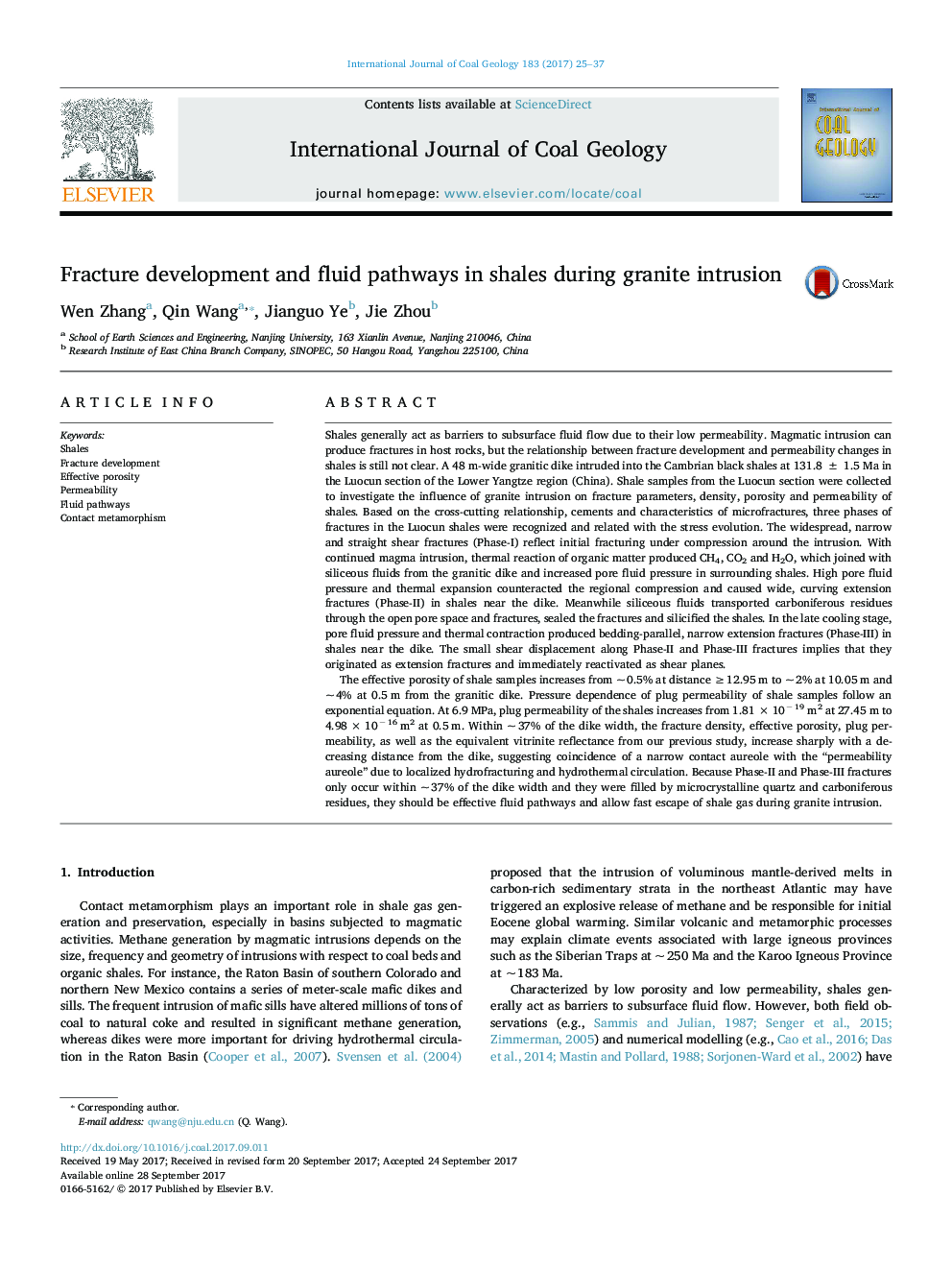| کد مقاله | کد نشریه | سال انتشار | مقاله انگلیسی | نسخه تمام متن |
|---|---|---|---|---|
| 5483579 | 1522520 | 2017 | 13 صفحه PDF | دانلود رایگان |
- Heat transfer and pore fluid pressure changed the stress around an intrusion.
- Multiphase fractures developed in host shales during granite intrusion.
- Fracture density and permeability of shales increase remarkably close to the dike.
- Extension fractures are effective pathways for siliceous fluids and shale gas.
- A narrow thermal aureole coincides with a permeability aureole in shales.
Shales generally act as barriers to subsurface fluid flow due to their low permeability. Magmatic intrusion can produce fractures in host rocks, but the relationship between fracture development and permeability changes in shales is still not clear. A 48 m-wide granitic dike intruded into the Cambrian black shales at 131.8 ± 1.5 Ma in the Luocun section of the Lower Yangtze region (China). Shale samples from the Luocun section were collected to investigate the influence of granite intrusion on fracture parameters, density, porosity and permeability of shales. Based on the cross-cutting relationship, cements and characteristics of microfractures, three phases of fractures in the Luocun shales were recognized and related with the stress evolution. The widespread, narrow and straight shear fractures (Phase-I) reflect initial fracturing under compression around the intrusion. With continued magma intrusion, thermal reaction of organic matter produced CH4, CO2 and H2O, which joined with siliceous fluids from the granitic dike and increased pore fluid pressure in surrounding shales. High pore fluid pressure and thermal expansion counteracted the regional compression and caused wide, curving extension fractures (Phase-II) in shales near the dike. Meanwhile siliceous fluids transported carboniferous residues through the open pore space and fractures, sealed the fractures and silicified the shales. In the late cooling stage, pore fluid pressure and thermal contraction produced bedding-parallel, narrow extension fractures (Phase-III) in shales near the dike. The small shear displacement along Phase-II and Phase-III fractures implies that they originated as extension fractures and immediately reactivated as shear planes.The effective porosity of shale samples increases from ~ 0.5% at distance â¥Â 12.95 m to ~ 2% at 10.05 m and ~ 4% at 0.5 m from the granitic dike. Pressure dependence of plug permeability of shale samples follow an exponential equation. At 6.9 MPa, plug permeability of the shales increases from 1.81 Ã 10â 19 m2 at 27.45 m to 4.98 Ã 10â 16 m2 at 0.5 m. Within ~ 37% of the dike width, the fracture density, effective porosity, plug permeability, as well as the equivalent vitrinite reflectance from our previous study, increase sharply with a decreasing distance from the dike, suggesting coincidence of a narrow contact aureole with the “permeability aureole” due to localized hydrofracturing and hydrothermal circulation. Because Phase-II and Phase-III fractures only occur within ~ 37% of the dike width and they were filled by microcrystalline quartz and carboniferous residues, they should be effective fluid pathways and allow fast escape of shale gas during granite intrusion.
262
Journal: International Journal of Coal Geology - Volume 183, 1 October 2017, Pages 25-37
